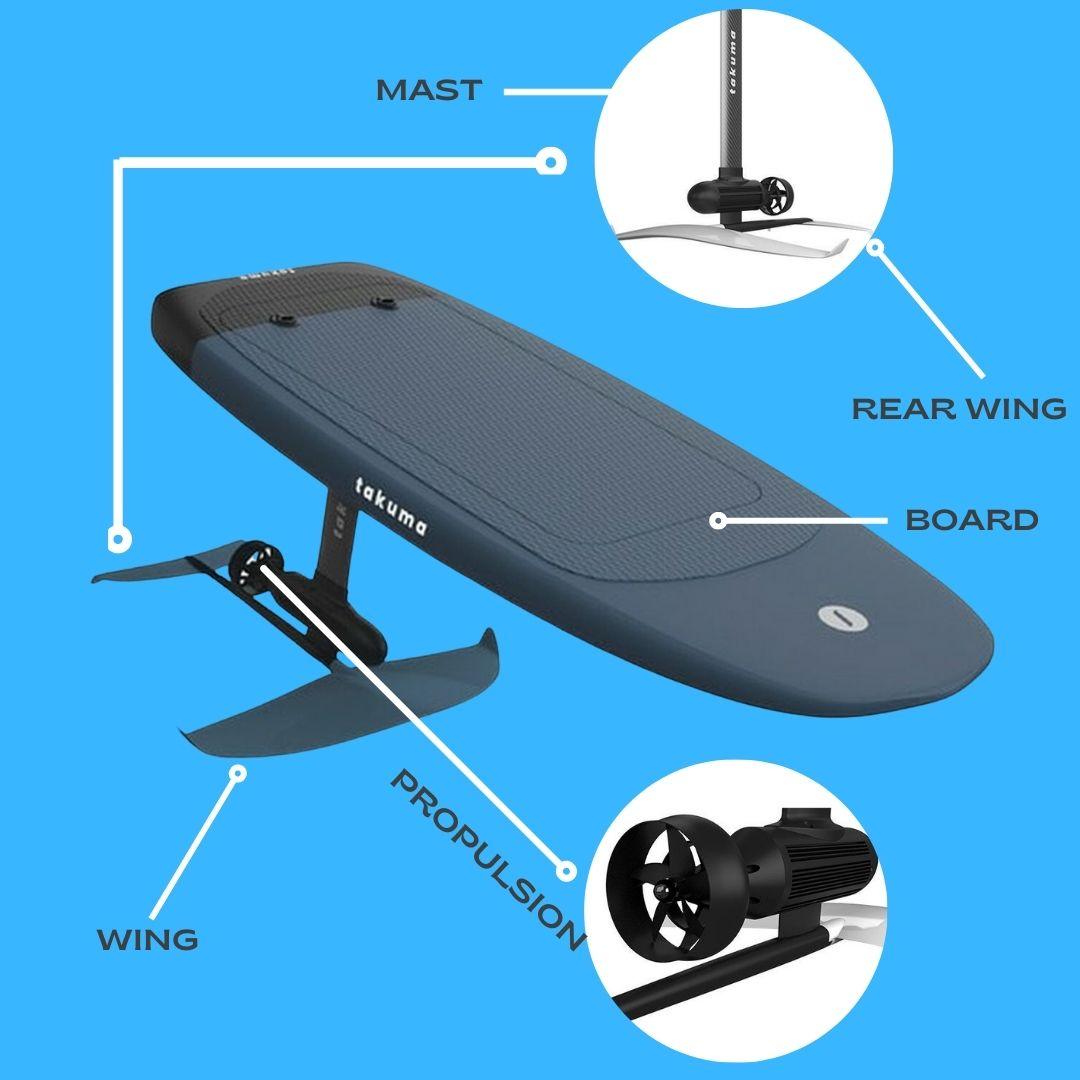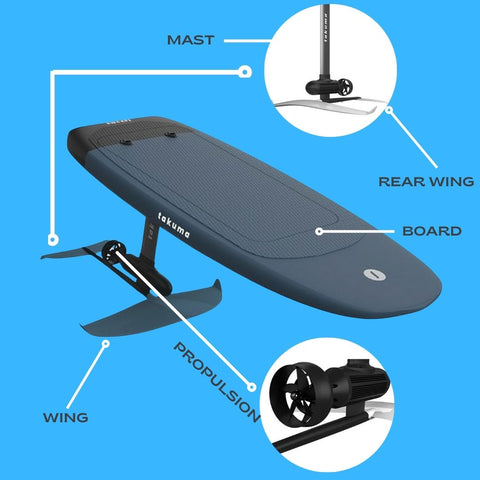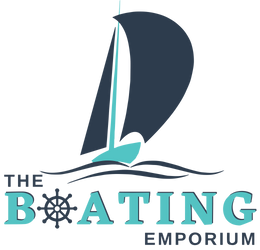PLEASE EMAIL OR BEGIN A LIVE CHAT

Hydrofoil Boards Buyer’s Guide
By definition, a foil board is a variation of the surfboard that lets you “fly” above waters. It is designed with a hydrofoil that extends below the board into the water. This design then causes the board to be lifted off the water surface, thus giving you the impression of “flying”.
Electric hydrofoil boards are more stable and smooth-gliding than the traditional ones. It doesn't lag, and doesn't produce noise that might worry the rider. It's a versatile board that one can ride and enjoy on lakes or beaches.
The first “paddle-in” or “prone” hydrofoil was built and ridden by Australian inventor, Brett Curtis, in 2009. In 2013, he posted photos of his friend riding the foil board on various surfing forums. It was 3 years later when surfing through hydrofoils gained traction, and it hasn’t been the same ever since.
By the end of 2018, Takuma Concepts announced their first ever e-foil board, the E-TAKUMA. This concept was a modular system where different components of the board can be used without the use of battery and motor.
A hydrofoil surfboard is probably one of the most complex water sports equipment when it comes to how they work. Several scientific laws and theories apply as to how the board is able to stand above water without touching it. In this part, we will try to break down the components of hydrofoil boards that make them work the way they do.
Foil boards look similar to surfboards. Hydrofoil boards, however, are smaller and slightly more difficult to operate since one has to control his height with his body weight. It is basically a surfboard with a hydrofoil attached underneath.
A hydrofoil is the long fin-like object that goes a few feet off the bottom of the board. At the end of that fin, you will find an airplane-like attachment. When this hydrofoil is attached to a board powered by a battery and a motor, that is when you have an electric hydrofoil board, or these days most commonly known as e-foil boards.

The physics behind how Hydrofoil boards work is directly derived from Newton’s Third Law (formally stated as “For every action, there is an equal and opposite reaction”). In this case, the action is water accelerating downward, and the reaction being the upward force that lifts the foil board out of the water.
Some foil boards are equipped with fibre carbon hulls, but some are inflatable as well. Inflatable hydrofoil boards are lighter and easier to transport and manage. They can also be easier to ride on water since they have more volume. As light the materials are for inflatable hydrofoil boards, they may have more resistance on the water’s surface, making it less smooth when the rider goes up and down.
We hope that this guide on hydrofoil boards helped you know more about this cutting-edge water sports equipment! If you have any questions, please do not hesitate to contact us, and our staff will be happy to help!
